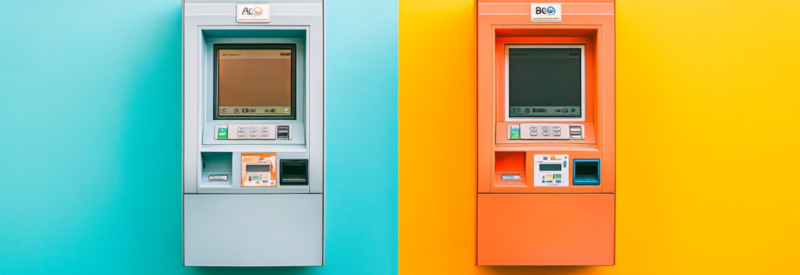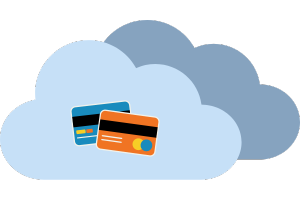One of the sections of financial lingo among the jargon of the industry that’s quite literally just a wall of codes is the SEC code system. If you process ACH (Automated Clearing House) bank-to-bank transactions, you may have encountered an SEC code or two in your tenure. But what are they, and how should you interpret and use them? This article aims to uncover those details for you in layman’s terms. Let’s dive in.
What is an SEC Code?

First things first, what is an SEC code? SEC stands for Standard Entry Class, so an SEC code is a standard entry class code. It’s an alpha (i.e., text-based) code of just a few characters that gives insights into the transaction.
If you know what you’re looking at, it reveals details like:
- Whether a transaction was sent to a consumer or business (by identifying the details of the intended bank account).
- If the transaction is a one-off or recurring billing transaction.
- Whether the transaction in question is a debit (a payment sent) or credit (a payment received).
- The specific computer record format used to complete the transaction (i.e., the format used to package and carry the transaction data and payment).
These codes only apply to NACHA files. So before we further discuss SEC codes, let’s back up and explain what NACHA files are.

What’s a NACHA file?
NACHA is an acronym that stands for the National Automated Clearing House Association. This is the body that handles the regulations and functionality of the ACH network, which is the electronic system that enables the movement of money in the U.S.
A NACHA file is one of the most (if not the most) common file types for bank-to-bank transactions. The file type is overseen and standardized by the National Automated Clearing House Association (NACHA).[1]GoCardless. “What is Nacha? Everything You Need to Know | GoCardless.” Accessed September 18, 2024.
When you process ACH payments or billing (i.e., submit a transaction through the Automated Clearing House), your transaction gets formatted and added to a roster of similar transactions known as a NACHA file. This file is processed overnight and facilitates the money transfer.

How do SEC Codes Work?
Now that you have the necessary understanding of NACHA and NACHA files, let’s move back to the topic at hand: SEC codes. SEC codes are crucial in securing Automated Clearing House (ACH) based electronic transactions transmitted through a NACHA file.
Here’s an overview of how SEC Codes work in practice for billing your customers:
Receive authorization to bill and submit the request
As a business owner, you need to have proper ACH authorization in place from the party you’re billing (meaning a signed authorization form for the amount and purpose of the charge). If you’ve provided authorization over the phone, you must indicate that you have received and recorded verbal authorization or follow up for written confirmation post-call before initiating the payment. This is the main portion that affects you.
The ODFI adds the SEC Code
When you bill the party in question through the ACH system, your request goes to the ODFI (Originating Depository Financial Institution) for format and submission. They format it into a NACHA file format, which includes the SEC code. They are responsible for adding the correct SEC code, but this is only possible if you complete the request correctly. If you do fail to do so, you risk sending the incorrect SEC code with the request and having your ACH result in the bounced check (i.e., not funded).
All ACH payments need an SEC code to process – a requirement set by NACHA. While there are quite a few SEC codes, only a select handful likely apply to your situation, making it simpler for your ODFI than you’d think.
Why are SEC Codes Important
SEC codes are essentially proof of authorization to bill. As such, NACHA requires them to run transactions without them, which violates the NACHA operating rules. They identify the transaction in several ways, as we touched on, including:
- Distinguishing the type of sender
- Distinguishing the type of receiver
- Identifying the bank account as consumer or non-consumer
- Identifying whether this transaction will (or will not) recur
- The authorization method (over the phone, internet, or in person)
- And confirms there was authorization (which you, as the merchant, attest to when you submit the request)
Top 5 Most Common ACH SEC Codes
There are over 20 SEC codes, and as a business owner, you may not need to know all of them as many will never apply to you or your business. Some are specifically for government entities, others are for informational and adjustment purposes (i.e., non-monetary codes), and many relate to the point of sale method – some of which you may not have in your business. So, let’s zoom in on the five most common ACH SEC codes you will most likely encounter as a business owner.
1. PPD
PPD stands for “Prearranged Payment and Deposit.” This is one of the most common codes (if not the most common) because it simply denotes a consumer payment preauthorized through an agreement. It can apply to both credits (refunds/payments to a consumer bank account) and debits (charges to a consumer bank account).
It also applies to a single entry (a one-off charge) or recurring entry (an automated bill payment plan, as you’d see with a gym membership or utility bill set up on autopay). If you operate a B2C (business to consumer) business that authorizes payments through an agreement, this may be the only SEC code that your business processes (unless you set up electronic bill pay through your business bank account to another business – see CCD for that scenario). This is also the code you’d see for initiating direct deposit payments to your employees.
2. CCD
CCD stands for “Corporate Credit or Debit.” This is another one of the most common codes because, very similar to the PPD SEC code, it denotes a payment preauthorized through an agreement. The only difference is that the end recipient’s business bank account is processed by the bank instead of a consumer bank account.
Just like the PPD, it can apply to both credits (refunds/payments to a business bank account) and debits (charges to a business bank account). If you operate a B2B company (business-to-business), this may be the only SEC code that your business processes.
PPD vs CCD
As you probably expected, the key difference between PPD (Prearranged Payment and Deposit) and CCD (Corporate Credit or Debit) lies in their use cases and the nature of the transactions they represent.
PPD: The PPD code is for consumer transactions. It is for scenarios where individuals authorize payments or deposits in advance. This might include activities like autopay, single or recurring bill payments, or direct salary deposits.
CCD: Conversely, CCD is more suited for business-to-business transactions. You’ll use it when initiating a credit or debit entry, such as paying vendors or collecting customer funds.
3. CTX
CTX stands for “Corporate Trade Exchange,” which is a coding indicating a corporate-to-corporate code (similar to the CCD code we just explored together). The main difference between CTX and CCD is that the CTX code supports (and actually usually requires) multiple addenda records (up to 9,999).[2]iCheck Gate. “List of 20 ACH Payment Gateway (SEC) Codes for Banks.” Accessed September 18, 2024.
4. WEB
WEB is another incredibly common SEC code for consumer (i.e., non-commercial) payments made on the Automated Clearing House (ACH) network. It denotes the transaction was initiated over the Internet. The difference between this code and other codes (which usually also allow for electronic processing) is that this means authorization was granted online and that no in-person or written confirmation was given.
5. TEL
Another incredibly common SEC code you may encounter in your business for consumers (i.e., non-commercial payments) made on the Automated Clearing House (ACH) network is TEL. This is for transactions you authorize over the phone. This code testifies that you have recorded oral authorization to process the transaction. Many large corporations mandate recording phone calls and have a formal script to authorize payments over the phone.
The Full List of SEC Codes
| SEC CODE | TITLE | TRANSACTION TYPE | ACCOUNT TYPE | AGREEMENT OR AUTHORIZATION |
| ACK | ACH Payment Acknowledge (Acknowledges CCD Credit Entry) | Non-Monetary | N/A | N/A |
| ADV | Automated Accounting Advice | Non-Monetary | N/A | Agreement ODFI/RDFI and ACH Operator |
| ARC | Accounts Receivable Entry | Debit Single Entry | Consumer or Non-Consumer | Authorization: Written Notice |
| ATX | Financial EDI Acknowledgment | Non-Monetary (Acknowledges CTX Credit Entry) | N/A | N/A |
| BOC | Back Office Conversion Entry | Debit Single Entry | Consumer or Non-Consumer | Authorization: Posted Notice and Written Notice |
| CCD | Corporate Credit or Debit Entry | Credit or Debit Single Entry or Recurring Entry | Non-Consumer | Agreement: Originator and Receiver |
| CIE | Customer Initiated Entry | Credit Single Entry | Consumer Originated | Agreement: Originator and Receiver |
| COR | Authorization: Orally authorized over the telephone | Non-Monetary | Consumer or Non-Consumer | N/A |
| CTX | Authorization: Orally authorized over the telephone | Credit or Debit Single Entry or Recurring Entry | Non-Consumer | Agreement: Originator and Receiver |
| DNE (Federal Government Agency Use Only) | Death Notification Entry | Non-Monetary | Consumer | N/A |
| ENR | Automated Enrollment Entry | Non-Monetary | Non-Consumer (Federal Government Agency) | Request by Receiver / RDFI Use Only |
| IAT | International ACH Transaction | Authorization: Orally authorized over the telephone | Consumer or Non-Consumer | Agreement: Originator and Receiver (Corporate); Authorization: In writing and signed, or similarly authenticated (Consumer Debit); Authorization: Orally or other non-written means (Consumer Credit) |
| MTE | Machine Transfer Entry | Credit or Debit Single Entry | Consumer | Authorization: In writing and signed, or similarly authenticated |
| POP | Point of Purchase Entry | Debit Single Entry | Consumer or Non-Consumer | Agreement: Posted Notice and in writing and signed, or similarly authenticated |
| POS | Point of Sale Entry | Credit or Debit Single Entry | Consumer | Agreement: In writing and signed, or similarly authenticated |
| PPD | Prearranged Payment and Deposit | Credit or Debit Single Entry or Recurring Entry | Consumer | Authorization: In writing and signed, or similarly authenticated (Consumer Debit); Authorization: Orally or other non-written means (Consumer Credit) |
| RCK | Re-presented Check Entry | Debit Single Entry | Consumer | Authorization: Posted Notice |
| SHR | Shared Network Transaction | Credit or Debit Single Entry | Consumer | Agreement: ODFI and RDFI |
| TEL | Telephone-Initiated Entry | Debit Single Entry or Recurring Entry | Consumer | Authorization: Orally authorized over the telephone |
| TRC | Authorization: Orally authorized over the telephone | Debit Single Entry | Consumer or Non-Consumer | Agreement: ODFI and RDFI |
| TRX | Truncated Entry Exchange | Debit Single Entry | Consumer or Non-Consumer | Agreement: ODFI and RDFI |
| WEB | Internet Initiated/Mobile Entry | Debit or Consumer to Consumer Credit Single Entry, or Recurring Entry | Consumer | Authorization: In writing and signed, or similarly authenticated (Debit WEB entries) |
| XCK | Destroyed Check Entry | Debit | Consumer or Non-Consumer | N/A |
Final Thoughts

Now, you better understand the role SEC codes play in how electronic bank-to-bank transactions are processed in the United States. They offer insight into the transaction in question, including details like the type of sender and the type of receiver. They also indicate whether or not this transaction will recur, how the payment was authorized, and if there was authorization (which you, as the merchant, attest to when you submit the request). These details are incredibly important for safely processing electronic payments. They help keep our United States payment grid secure, ensuring those processing transactions have the correct authority and permission to do so. Thankfully, the NACHA commission is on the case and regulates SEC codes for the rest of our benefit.
Learning about the intricacies of the payments industry can be incredibly daunting. It helps to have a payment processor like PaymentCloud that supports ACH payments to walk you through it all. Contact us to get in touch with a dedicated account manager today!
Frequently Asked Questions
What is the SEC code on a debit card?
You may be thinking of the CVV (or CVC, CSC, CV2 code). This is the three or four-digit code located on the back of the card near the signature line. An SEC code has nothing to do with debit or credit cards.
Instead, SEC codes relate to ACH transactions (i.e., bank-to-bank transactions handled electronically through the Automated Clearing House). To process the transaction, your processing institution formats the transaction data and adds your transaction to a NACHA file. To process each transaction, an identifiable SEC code must be on this file.
Where can I find the SEC code?
If you paid using ACH, you’ll find the SEC code with the descriptor line item on your bank statement. This will be on there even if you set up recurring billing through auto-pay.
For recurring billing, you should see “PPD” (Prearranged Payment and Deposit Entry) on your statement. If you don’t see it, there’s a chance your bank simply doesn’t add that detail to the descriptor. If needed, you may be able to contact them for clarification.
What is the most common SEC code?
CCD and PPD are the two most common SEC codes. CCD stands for “Corporate Credit or Debit Entry,” and PPD stands for “Prearranged Payment and Deposit.”
The PPD SEC code is for consumer transactions. PPD involves individuals authorizing payments or deposits in advance. This might include activities like bill payments, recurring debits (like Afterpay, for example), or direct deposits of salaries.
CCD, on the other hand, is for business-related transactions. It applies when a business initiates a credit or debit entry, like paying vendors or collecting customer funds.
Is an SEC code the same as CVV?
SEC codes and CVVs are not the same.
An SEC code is specific to classifying the type of transaction when processing bank-to-bank transactions (like direct deposit, autopay, or e-checks). Conversely, CVV is a security for debit or credit transactions, usually requested for payments made online or over the phone. While the SEC code categorizes ACH payments, the CVV verifies card ownership in card transactions.







